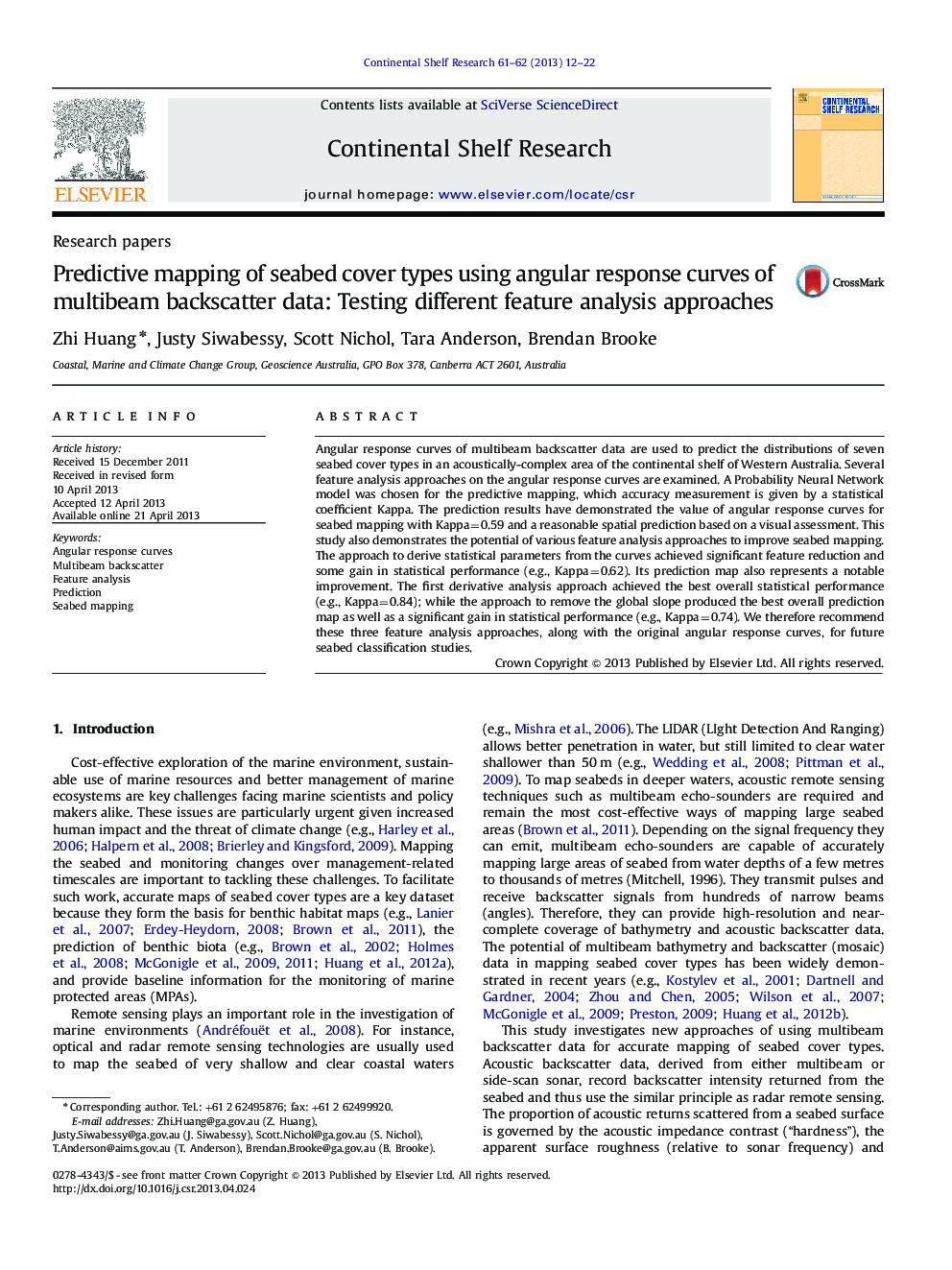| Article ID | Journal | Published Year | Pages | File Type |
|---|---|---|---|---|
| 4532140 | Continental Shelf Research | 2013 | 11 Pages |
•We can map seabed using angular response curves of multibeam backscatter data.•Analysis approaches for hyperspectral data can be employed for backscatter data.•The first derivative analysis and the removal of global trend improve prediction.
Angular response curves of multibeam backscatter data are used to predict the distributions of seven seabed cover types in an acoustically-complex area of the continental shelf of Western Australia. Several feature analysis approaches on the angular response curves are examined. A Probability Neural Network model was chosen for the predictive mapping, which accuracy measurement is given by a statistical coefficient Kappa. The prediction results have demonstrated the value of angular response curves for seabed mapping with Kappa=0.59 and a reasonable spatial prediction based on a visual assessment. This study also demonstrates the potential of various feature analysis approaches to improve seabed mapping. The approach to derive statistical parameters from the curves achieved significant feature reduction and some gain in statistical performance (e.g., Kappa=0.62). Its prediction map also represents a notable improvement. The first derivative analysis approach achieved the best overall statistical performance (e.g., Kappa=0.84); while the approach to remove the global slope produced the best overall prediction map as well as a significant gain in statistical performance (e.g., Kappa=0.74). We therefore recommend these three feature analysis approaches, along with the original angular response curves, for future seabed classification studies.
